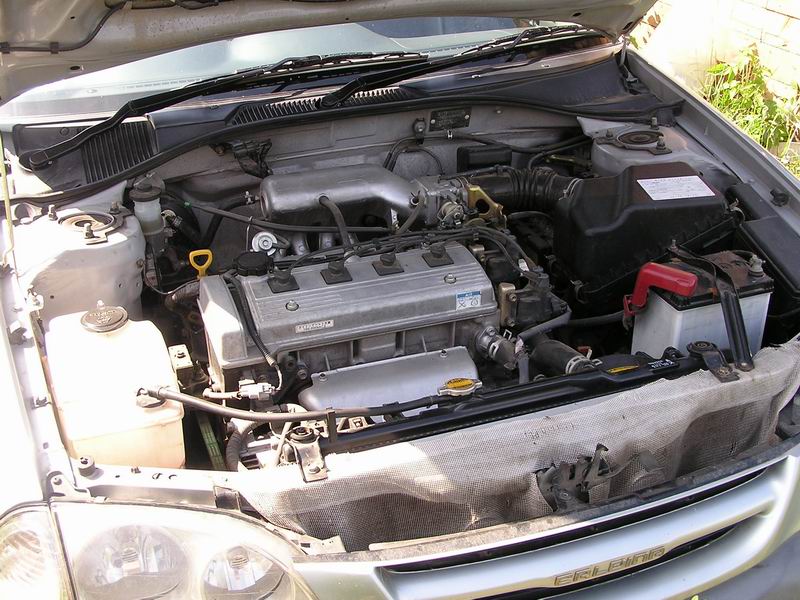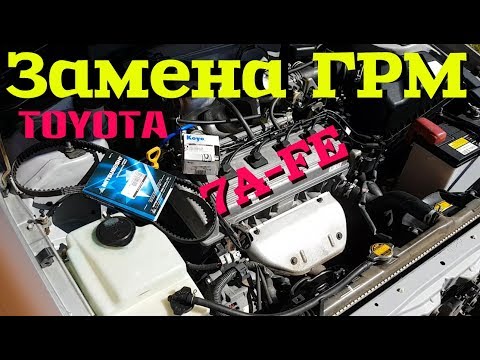
Engine 7A-FE
The development of A-series engines at Toyota started back in the 70s of the last century. This was one of the steps towards reducing fuel consumption and increasing efficiency, so all units of the series were quite modest in terms of volume and power.

The Japanese achieved good results in 1993 by releasing another modification of the A series - the 7A-FE engine. At its core, this unit was a slightly modified prototype of the previous series, but it is rightfully considered one of the most successful internal combustion engines in the series.
Technical data
The volume of cylinders was increased to 1.8 liters. The motor began to produce 115 horsepower, which is quite a high figure for such a volume. The characteristics of the 7A-FE engine are interesting in that the optimal torque is available from low revs. For city driving, this is a real gift. And also it allows you to save fuel by not scrolling the engine in lower gears to high speeds. In general, the characteristics are as follows:
| Years of production | 1990 – 2002 Feet |
| Working volume | 1762 cubic centimeters |
| Maximum power | 120 horsepower |
| Torque | 157 Nm at 4400 rpm |
| Bore | 81.0 mm |
| Piston stroke | 85.5 mm |
| Cylinder block | cast-iron |
| Cylinder head | aluminum |
| Gas distribution system | DOHC |
| fuel type | gasoline |
| Predecessor | 3T |
| Successor | 1ZZ |
A very interesting fact is the existence of two types of 7A-FE engine. In addition to conventional powertrains, the Japanese developed and actively marketed the more economical 7A-FE Lean Burn. By leaning the mixture in the intake manifold, maximum economy is achieved. To implement the idea, it was necessary to use special electronics, which determined when it was worth depleting the mixture, and when it was necessary to put more gasoline into the chamber. According to reviews of car owners with such an engine, the unit is characterized by reduced fuel consumption.

Features of operation 7A-FE
One of the advantages of the motor design is that the destruction of such an assembly as the 7A-FE timing belt eliminates the collision of valves and piston, i.e. in simple terms, the engine does not bend the valve. At its core, the engine is very hardy.
Some owners of advanced 7A-FE units with a lean-burn system say that the electronics often behave unpredictably. Not always, when you press the accelerator pedal, the lean mixture system is turned off, and the car behaves too calmly, or starts to twitch. The rest of the problems that arise with this power unit are of a private nature and are not massive.
Where was the 7A-FE engine installed?
Regular 7A-FEs were intended for C-class cars. After a successful test run of the engine and good feedback from drivers, the concern began to install the unit on the following cars:
| Model | Body | Of the year | Country |
|---|---|---|---|
| Avensis | AT211 | 1997 – 2000 Feet | Europe |
| Caldina | AT191 | 1996 – 1997 Feet | Japan |
| Caldina | AT211 | 1997 – 2001 Feet | Japan |
| Carina | AT191 | 1994 – 1996 Feet | Japan |
| Carina | AT211 | 1996 – 2001 Feet | Japan |
| Carina e | AT191 | 1994 – 1997 Feet | Europe |
| Celica | AT200 | 1993 – 1999 Feet | Except Japan |
| Corolla/Conquest | AE92 | September 1993 - 1998 | South Africa |
| Corolla | AE93 | 1990 – 1992 Feet | Australia only |
| Corolla | AE102 / 103 | 1992 – 1998 Feet | Except Japan |
| Corolla/Prizm | AE102 | 1993 – 1997 Feet | North America |
| Corolla | AE111 | 1997 – 2000 Feet | South Africa |
| Corolla | AE112 / 115 | 1997 – 2002 Feet | Except Japan |
| Corolla Space | AE115 | 1997 – 2001 Feet | Japan |
| Corona | AT191 | 1994 – 1997 Feet | Except Japan |
| Corona premio | AT211 | 1996 – 2001 Feet | Japan |
| Sprinter Carib | AE115 | 1995 – 2001 Feet | Japan |
A-series engines have become a good impetus for the development of the Toyota concern. This development was actively bought by other manufacturers, and today the developments of the latest generations of power units with index A are used by the automotive industry of developing countries.




